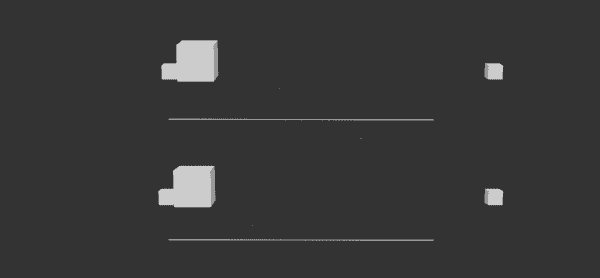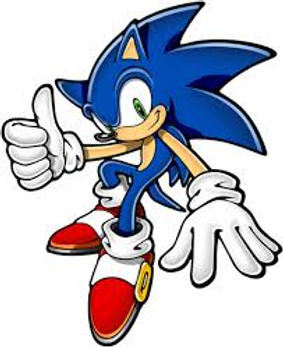
Unit 12.1 - Character Animation
Maya - Physical Animation
Using the 'Eleven' rig provided; I will create a short 5-10 second animation. It will demonstrate knowledge of body mechanics. I will get the character to act out a short slap stick scene. l shall look at the black and white comedies from the silent movie era like Charlie Chaplin and Harold Lloyd. Then have a search for at the 'door opening' animations that have been done for the Animation Mentor course. These are a good examples of the short physical animations that we are trying to achieve. I will then film myself acting out movement, watch frame by frame and try to replicate the key poses.
Bouncing Ball
The first example of a physical animation is of a simple bouncing ball. It drops from high up, hits the plane (when it then distorts in shape slightly due to impact) and then rolls on the plane forward.
Hard Ball
This animation represents a harder ball being dropped. As you can see the ball bounces less and has more density.
Research - The 12 Principles Of Animation
The 12 principles of animation was created by Walt Disney Studios and represents the results of Disney's attempt to create more 'real' animations in their movies.
The Illusion Of Life
The video on the left describes the 12 principles of animation and below and I each principle explained.
1. Squash & Stretch
This action gives the illusion of weight and volume to a character as it moves. Also squash and stretch is useful in animating dialogue and doing facial expressions. How extreme the use of squash and stretch is, depends on what is required in animating the scene. Usually it's broader in a short style of picture and subtler in a feature. It is used in all forms of character animation from a bouncing ball to the body weight of a person walking. This is the most important element you will be required to master and will be used often.


2. Anticipation
This movement prepares the audience for a major action the character is about to perform, such as, starting to run, jump or change expression. A dancer does not just leap off the floor. A backwards motion occurs before the forward action is executed. The backward motion is the anticipation. A comic effect can be done by not using anticipation after a series of gags that used anticipation. Almost all real action has major or minor anticipation such as a pitcher's wind-up or a golfers' back swing. Feature animation is often less broad than short animation unless a scene requires it to develop a characters personality.
3. Staging
A pose or action should clearly communicate to the audience the attitude, mood, reaction or idea of the character as it relates to the story and continuity of the story line. The effective use of long, medium, or close up shots, as well as camera angles also helps in telling the story. There is a limited amount of time in a film, so each sequence, scene and frame of film must relate to the overall story. Do not confuse the audience with too many actions at once. Use one action clearly stated to get the idea across, unless you are animating a scene that is to depict clutter and confusion.


4. Straight Ahead And Pose To Pose Animation
Straight ahead animation starts at the first drawing and works drawing to drawing to the end of a scene. You can lose size, volume, and proportions with this method, but it does have spontaneity and freshness. Fast, wild action scenes are done this way. Pose to Pose is more planned out and charted with key drawings done at intervals throughout the scene. Size, volumes, and proportions are controlled better this way, as is the action. The lead animator will turn charting and keys over to his assistant.
5. Follow Through And Overlapping Animation
When the main body of the character stops all other parts continue to catch up to the main mass of the character, such as arms, long hair, clothing, coat tails or a dress, floppy ears or a long tail (these follow the path of action). Nothing stops all at once. This is follow through. Overlapping action is when the character changes direction while his clothes or hair continues forward. The character is going in a new direction, to be followed, a number of frames later, by his clothes in the new direction.


6. Slow-Out And Slow-In
As action starts, we have more drawings near the starting pose, one or two in the middle, and more drawings near the next pose. Fewer drawings make the action faster and more drawings make the action slower. Slow-ins and slow-outs soften the action, making it more life-like. For a gag action, we may omit some slow-out or slow-ins for shock appeal or the surprise element. This will give more snap to the scene.
7. Arcs
All actions, with few exceptions (such as the animation of a mechanical device), follow an arc or slightly circular path. This is especially true of the human figure and the action of animals. Arcs give animation a more natural action and better flow. Think of natural movements in the terms of a pendulum swinging. All arm movement, head turns and even eye movements are executed on an arcs.


8. Secondary Action
This action adds to and enriches the main action and adds more dimension to the character animation, supplementing and/or re-enforcing the main action. Example: A character is angrily walking toward another character. The walk is forceful, aggressive, and forward leaning. The leg action is just short of a stomping walk. The secondary action is a few strong gestures of the arms working with the walk. Also, the possibility of dialogue being delivered at the same time with tilts and turns of the head to accentuate the walk and dialogue, but not so much as to distract from the walk action.
9. Timing
Expertise in timing comes best with experience and personal experimentation, using the trial and error method in refining technique. The basics are: more drawings between poses slow and smooth the action. Fewer drawings make the action faster and crisper. A variety of slow and fast timing within a scene adds texture and interest to the movement. Most animation is done on twos (one drawing photographed on two frames of film) or on ones (one drawing photographed on each frame of film).


10. Exaggeration
Exaggeration is not extreme distortion of a drawing or extremely broad, violent action all the time. Its like a caricature of facial features, expressions, poses, attitudes and actions. Action traced from live action film can be accurate, but stiff and mechanical. In feature animation, a character must move more broadly to look natural. The same is true of facial expressions, but the action should not be as broad as in a short cartoon style. Exaggeration in a walk or an eye movement or even a head turn will give your film more appeal.
11. Solid Drawing
The basic principles of drawing form, weight, volume solidity and the illusion of three dimension apply to animation as it does to academic drawing. The way you draw cartoons, you draw in the classical sense, using pencil sketches and drawings for reproduction of life. You transform these into color and movement giving the characters the illusion of three-and four-dimensional life. Three dimensional is movement in space. The fourth dimension is movement in time.


12. Appeal
A live performer has charisma. An animated character has appeal. Appealing animation does not mean just being cute and cuddly. All characters have to have appeal whether they are heroic, villainous, comic or cute. Appeal, as you will use it, includes an easy to read design, clear drawing, and personality development that will capture and involve the audience's interest. Early cartoons were basically a series of gags strung together on a main theme.
Research - Animation Styles
Pocoyo
The first animation style I researched is Pocoyo. From viewing many different Pocoyo videos, I must say that the style is definitely the most simple of the 3 I am researching. The movements are very quick and sudden with not really any flow or motion. The animation style is not very accurate to real-life as the timing and scale of them are unrealistic. However Pocoyo is relatively old with first season debuting in 2005, so the animation style is not as fluid compared to today's animation.
Monsters, Inc
The second animation style I researched was Monsters, Inc. The animation style is more traditional to most Pixar films. The timing and the movements are more realistic in Monsters, Inc. However the animation style is more exaggerated as this is a cartoon. In addition the characters are monsters so the animation style in Monsters, Inc fits more to the aesthetic.
Despicable Me
The third film I researched was Despicable Me. The animation style in this film series is also very similar to Monsters Inc as both share the realism factor to fit the aesthetic. However I think that Despicable Me does this even better as the films are more recent with Monsters Inc debuting in 2001 and the original Despicable Me releasing in 2010. So the ability to create even more realistic animation has gotten better.
Research - Line Of Action
The line of action is an imaginary line that goes through the figure to show the basis and foundation of the character's movements. As the line of action changes position so does the figure's pose. The line of action is used before actually animating something in order to create the baseline for the character's full animation from start to finish.

As seen in the image on the left as the character's pose changes so does the actual figure. When the figure leans backwards the line of action bends towards that direction and when the figure's pose is upright the line of action is straight.
Example 1 - Joy Pose
On the right side I have found an image from google that represents the body language of a joyful person. I put this image in Paint and used green lines to show the line of action. As you can see the the line of action bends in the direction of the figure's pose. Whichever way the figure moves the line of action moves with it as well.


Example 2 - Anger Pose
The second pose I have edited is for the anger expression. I have found that this pose has much similar line of action as there are not many different body positions that change while expressing anger.
Example 3 - Despair Pose
The last pose I edited was for despair. I personally found the pose for despair to be the hardest to create a line of action for because of the variety of positions. I would say that this expression has similar body positions to that of the previous expression, however this expression had a lot more bends in the lines of action.

Research - Silhouette Animation
A silhouette is the image of a person, animal, object or scene represented as a solid shape of a single color, usually black, with its edges matching the outline of the subject. The interior of a silhouette is featureless, and the whole is typically presented on a light background, usually white, or none at all.


Example: Sonic The Hedgehog
This is an example of a silhouette. A good silhouette easily allows the viewer to tell what is going on with the character or object without actually seeing it.
Silhouette Animation
On the right is an animation using only silhouettes. If you watch it can still recognise the character's expressions without actually seeing them.
Maya - Box Lifting Animation
On the right is a box lifting animation I created in Maya. It simply shows the rig bending the knees and picking up the box.
Maya - "Show Me The Money" Animation
I started my animation by downloading the Eleven rig from ElevenSecondClub.com. I used the famous phrase "Show me the money!" from the Jerry Maguire film from 1996. I began animation by animating the mouth of the rig and made sure it was in sync with the audio that I imported.


I then animated the arms so that there was body movement. As the character is shouting I thought that making the arms go up when speaking would be appropriate.
I then animated the eyebrows to create more realism for the character's speech.

Final Animation
Project Evaluation
The theme of this project was to explore techniques used in animation and then create a series of different animations in Maya. I began the project by creating two animations in Maya – one of a bouncing ball and the other of a hard ball. This was to demonstrate my ability to animate two different types of balls. I thought that this project overall was quite time consuming as animating can become tedious over time, however it was interesting to research an area which I did not consider a speciality of mine.
The part of the project I found the most interesting was the research about the Line Of Action. This was something I did not know about before the project and I found it interesting to explore this idea within animation.
New techniques I experienced was mainly using the rig of a pre-made character to animate with and effectively creating a realistic animation with the rigged character.
The aspect I researched the most during the project was the techniques of animation. The aim was to learn a greater level of insight about the animation process.
This influenced my project as I needed to research specific ideas within animation in order to then create my own animation at the end.
The technique I enjoyed the most was animating the mouth of my rig to sync with my audio, although tedious at times the end result was satisfying.
The most successful part of my project was definitely my research about animation styles, lines of action and silhouettes.
For the most part I did not encounter any overwhelming issues during my project however did not find the creation of the box animation very easy to do.
I learnt from this issue by using more key frames in my final animation to make it easier to animate and also creating more flow and motion in the animation. This obviously affected my project by allowing me to create a better final animation at the end.
If given the chance to re-do the project again I would definitely make more realistic ball animations with more key frames involved to create more flow and motion as mentioned earlier.